Fine Ceramics, sometimes referred to as "advanced ceramics," are engineered materials that support the development of cutting-edge technology.
Heat (2)
Low Thermal Expansion
When materials are heated, their size and volume increase in small increments, in a phenomenon known as thermal expansion. Expansion values vary depending on the material being heated. The coefficient ratio of thermal expansion indicates how much a material expands per 1℃ (2.2℉) rise in temperature. Fine Ceramics (also known as "advanced ceramics") have low coefficients of thermal expansion — less than half those of stainless steels.
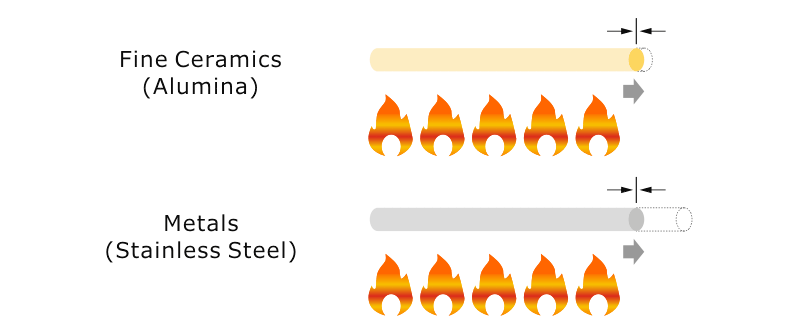
Applications: Parts for high-precision measuring equipment.
Description
Coefficient of Thermal Expansion
The ratio that a material expands in accordance with changes in temperature is called the coefficient of thermal expansion. Because Fine Ceramics possess low coefficients of thermal expansion, their distortion values, with respect to changes in temperature, are low. The coefficients of thermal expansion depend on the bond strength between the atoms that make up the materials. Covalent materials such as diamond, silicon carbide and silicon nitride have strong bonds between atoms, resulting in low coefficients of thermal expansion. In contrast, materials such as stainless steel possess weaker bonds between atoms, resulting in much higher coefficients of thermal expansion in comparison with Fine Ceramics.
Coefficients of Thermal Expansion
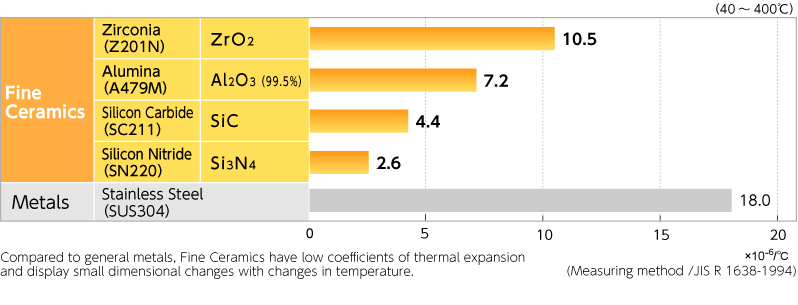
For more information, please see Excerpt of Graph Values.
The term "Fine Ceramics" is interchangeable with "advanced ceramics," "technical ceramics" and "engineered ceramics." Use varies by region and industry.
People who read this page also read.
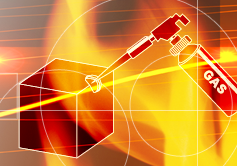
Heat (1)
Heat (1)
Heat Resistance to Withstand Extreme Temperatures
Heat Resistance to Withstand Extreme Temperatures
Characteristics of Fine Ceramics
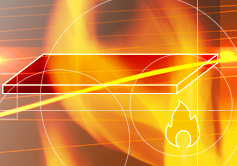
Heat (3)
Heat (3)
Thermal Conductivity Easily Transmits Heat
Thermal Conductivity Easily Transmits Heat
Characteristics of Fine Ceramics
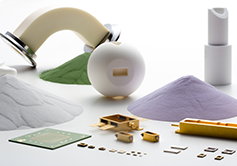
Different Types of Fine Ceramics
Different Types of Fine Ceramics
Wide Variety of Products to Support both Industry and Society
Wide Variety of Products to Support both Industry and Society
Introduction to Fine Ceramics
If you want to use ceramics in business, click here.
Kyocera's Fine Ceramics products (All websites below open in a separate window.)
Product Category
 Semiconductor / LCD Processing Equipment
Semiconductor / LCD Processing Equipment
 Life / Culture / Industrial Machines
Life / Culture / Industrial Machines
 Wireless Communications
Wireless Communications
 Computer Peripherals
Computer Peripherals
 Environmental Preservation / Renewable Energy
Environmental Preservation / Renewable Energy
 Medical Equipment / Devices
Medical Equipment / Devices
 Single-Crystal Sapphire Products
Single-Crystal Sapphire Products
 Metallized / Vacuum Components
Metallized / Vacuum Components
 Electronics Industry
Electronics Industry
 Heaters
Heaters
 Piezoelectric Ceramics
Piezoelectric Ceramics
Search by Material
 Alumina
Alumina
 Silicon Nitride
Silicon Nitride
 Silicon Carbide
Silicon Carbide
 Sapphire
Sapphire
 Zirconia
Zirconia
 Cordierite
Cordierite
 Yttria
Yttria
 Aluminum Nitride
Aluminum Nitride
 Cermet
Cermet
 Mullite
Mullite
 Steatite
Steatite
 Forsterite
Forsterite
Search by Property/Characteristic


- Thermal Properties
- Coefficient of Thermal Expansion
- Thermal Conductivity
- Heat Shock Resistance

- Electrical Properties
- Insulation / Semiconductivity

- Chemical Properties
- Chemical Resistance










